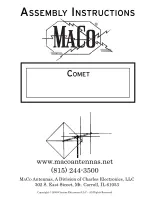
132
Section 6
GPS Receiver
Reference
2. For simulated speed, user track, or altitude, highlight
the desired field and press
ENTER
. Enter the
desired value using the
ARROW
keypad and press
ENTER
when finished.
Units—
settings allows you to define the magnetic
variation for your area, select desired units of measure and
select the heading reference.
Position Format—
is used to change the coordinate
system in which a given position reading is displayed.
The default format is latitude and longitude in degrees
and decimal minutes (hddd°mm.mmm’). The following
additional formats are available:
hddd.ddddd —
latitude/longitude in decimal degrees
hddd°mm.mmm’ —
latitude/longitude in degrees,
and decimal minutes
hddd°mm’ss.s”—
latitude/longitude in degrees,
minutes, and decimal seconds
Maidenhead —
APRS use, tracking systems
UTM/UPS —
Universal Transverse Mercator /
Universal Polar Stereographic grids
User UTM Grid —
User defined Universal
Transverse Mercator grid
WARNING:
If ‘User MV’ is selected, you
must periodically update the magnetic
variation as your position changes. Using
this setting, the NavTalk Pilot will not
automatically calculate and update the
magnetic variation at your present position.
Failure to update this setting may result in
substantial differences between the
information displayed on your unit and
external references, such as a magnetic
compass.
Distance & Speed—
lets you select the desired units
of measure for distance and speed readouts in ‘Nautical’,
‘Statute’ or ‘Metric’ terms.
The ‘User Map’ option
allows you to define the
magnetic variation for
your area. ‘Auto MV’
is the preferred setting
in most cases.
Select nautical, statute
or metric units of
measure from the
‘Units’ settings.
I
















































